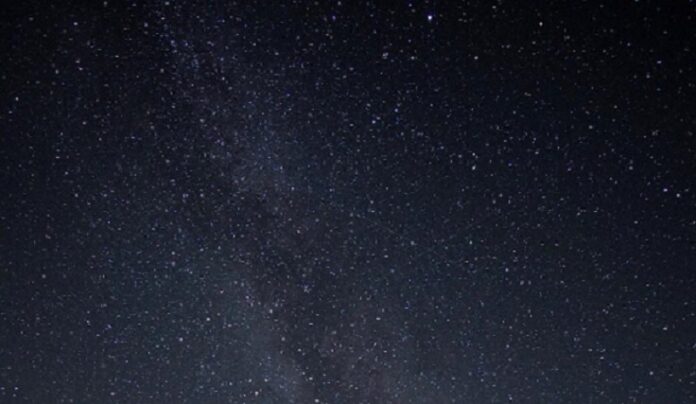Observation of 26 cm radio signals, formed due to hyperfine transition of cosmic hydrogen offer an alternative tool to the study of early universum. As for neutral epoch of the infant universum when no light was emitted, 26 cm lines are perhaps only window. However, these redshifted radio signals emitted by cosmic hydrogen in the early universum are extremely feeble and have been elusive so far. In 2018, EDGE experiment reported detection of 26 cm signals but the findings could not be independently confirmed. The main issue was instrument systematic and contamination with the other signals from the sky. The REACH Experiment is to employ unique methodology to overcome the bottleneck. It is hoped that this research group will reliably be able to detect these elusive signals in near future. If successful, REACH Experiment may bring ‘26 cm radio astronomy’ to the forefront in the study of early universum and help us much in unravelling the mysteries of early universum.
Als het gaat om de studie van vroeg universum, naam van onlangs gelanceerd James Webb Ruimtetelescoop (JWST) pops up in our mind. JWST, a successor of hugely successful Hubble telescope, is a space-based, infrared observatory equipped to capture optical/infrared signals from the early stars and galaxies formed in the Universum soon after the Big Bang1. Echter, JWST has some limitation so far as picking up signals from the neutral epoch of vroeg universum is bezorgd.
Table: Epochs in the history of universum sinds de oerknal

(Bron: Philosophy of Cosmology – 21 cm achtergrond. Verkrijgbaar bij http://philosophy-of-cosmology.ox.ac.uk/images/21-cm-background.jpg)
Up to 380 k years after the big bang, the universum was filled with ionised gas and was fully opaque. Between 380k – 400 million years, the universum had become neutral and transparent. The epoch of reionisation started after this phase starting 400 million after the big bang.
During the neutral epoch of early universum, wanneer de universum was filled with neutral gases and was transparent, no optical signal was emitted (hence called dark age). Unionized material does not emit light. This poses a challenge in study of early Universum of neutral epoch. However, microwave radiation of 21 cm wavelength (corresponding to 1420 MHz) emitted by the cold, neutral cosmic hydrogen during this epoch as a result of hyperfine transition (from parallel spin to more stable anti-parallel spin) offers opportunities to researchers. This 21 cm microwave radiation would be redshifted upon reaching Earth and will be observed at 200MHz to 10 MHz frequencies as radio waves2,3.
21 cm radioastronomie: Observation of 21-centimeter cosmic hydrogen signals offers an alternative approach to the study of early universum especially of neutral epoch phase that was devoid of any light emission. This can also inform us about new physics such as distribution of matter over time, dark energy, dark matter, neutrino masses, and inflation2.
However, the 21-cm signals emitted by the cosmic hydrogen during early universum phase is elusive. It is expected to be extremely weak (about one hundred thousand times weaker than other radio signals also emanating from the sky). As a result, this approach is still in infancy.
In 2018 hadden onderzoekers melding gemaakt van de detectie van een dergelijk radiosignaal met een frequentie van 78 MHz, waarvan het profiel grotendeels overeenkwam met de verwachtingen voor het 21 centimeter lange signaal dat wordt uitgezonden door de oer-kosmische waterstof.4. Maar deze detectie van het oorspronkelijke 21-cm radiosignaal kon niet onafhankelijk worden bevestigd, vandaar dat de betrouwbaarheid van het experiment tot nu toe niet kon worden vastgesteld. Het belangrijkste probleem lijkt besmetting met de radiosignalen op de voorgrond te zijn.
De nieuwste mijlpaal is het rapport van Radio Experiment for the Analysis of Cosmic Hydrogen (REACH) op 21 juli 2022. REACH zal een nieuwe experimentele benadering gebruiken om deze zwakke, ongrijpbare kosmische radiosignalen te detecteren en biedt zo nieuwe hoop op bevestiging van kosmische signalen van 21 centimeter.
Het radio-experiment voor de analyse van kosmische waterstof (REACH) is een hemelgemiddeld experiment van 21 cm. Dit heeft tot doel observaties te verbeteren door problemen te beheren waarmee instrumenten worden geconfronteerd die verband houden met resterende systematische signalen in de gegevens. Het richt zich op het detecteren en gezamenlijk verklaren van de systematiek samen met de voorgronden en het kosmologische signaal met behulp van Bayesiaanse statistieken. Het experiment omvat gelijktijdige waarnemingen met twee verschillende antennes, een ultrabreedbandsysteem (roodverschuivingsbereik ongeveer 7.5 tot 28) en een ontvangerkalibrator op basis van metingen in het veld.
This development is significant given its potential to be one of the best tools (and cost effective too vis-a-vis space-based observatories like James Webb) for study of early universum as well as possibility of ushering in of new fundamental physics.
***
Referenties:
- Prasad U., 2021. James Webb Space Telescope (JWST): het eerste ruimteobservatorium gewijd aan de studie van het vroege heelal. Wetenschappelijk Europees. Geplaatst op 6 november 2021. Verkrijgbaar bij http://scientificeuropean.co.uk/sciences/space/james-webb-space-telescope-jwst-the-first-space-observatory-dedicated-to-the-study-of-early-universe/
- Pritchard JA en Loeb A., 2012. 21 cm kosmologie in de 21e eeuw. Rapporten over voortgang in de natuurkunde 75 086901. Beschikbaar op: https://iopscience.iop.org/article/10.1088/0034-4885/75/8/086901. Preprint bij arXiv verkrijgbaar bij https://arxiv.org/abs/1109.6012 pdf-versie https://arxiv.org/pdf/1109.6012.pdf
- Oxford universiteit. Filosofie van Kosmologie – 21 cm achtergrond. Verkrijgbaar bij http://philosophy-of-cosmology.ox.ac.uk/21cm-background.html
- Bowman, J., Rogers, A., Monsalve, R. et al. Een absorptieprofiel gecentreerd op 78 megahertz in het hemelgemiddelde spectrum. Natuur 555, 67-70 (2018). https://doi.org/10.1038/nature25792
- de Lera Acedo, E., de Villiers, DIL, Razavi-Ghods, N. et al. De REACH-radiometer voor het detecteren van het 21 cm-waterstofsignaal van roodverschuiving z ≈ 7.5–28. Nat Astron (2022). https://doi.org/10.1038/s41550-022-01709-9
- Eloy de Lera Acedo 2022. Onthulling van de mysteries van het baby-universum met de REACH-radiometer. Online verkrijgbaar bij https://astronomycommunity.nature.com/posts/u
***






































